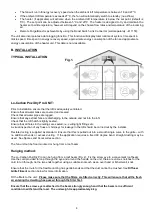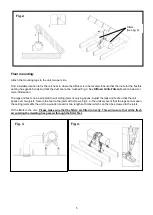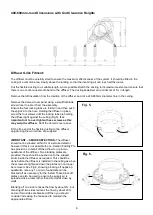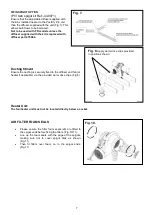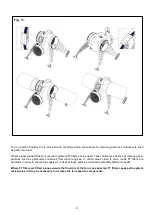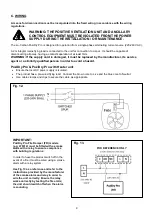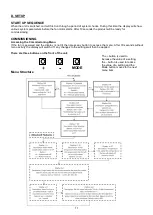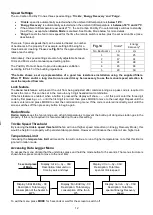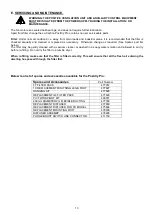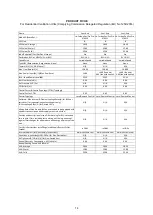
6
400-600mm Joist Dimensions with Unit Clearance Heights
Diffuser Grille Fitment:
The diffuser must be carefully sited to ensure the maximum effectiveness of the system. It should be fitted in the
ceiling of a common area, ideally above the landing so that the incoming air can reach all the rooms.
Cut the flexible ducting to a suitable length, where possible stretch the ducting to its maximum extent and ensure that
there is one continuous smooth bend to the diffuser. The ducting
must
remain a minimum of 1m in length.
Remove the loft insulation from the location of the diffuser and cut a 240-260mm diameter hole in the ceiling.
Remove the domed cover panel using a small flat blade
screw driver to prise it from the assembly.
Ensure the four locking tabs are folded in and then push
the spigot in to the hole. Holding the diffuser in place;
screw the four screws until the locking tabs are holding
the diffuser tight against the ceiling (Fig.5).
It is
important not to over tighten these screws as this
may warp the diffuser.
Refit the domed cover panel.
Fit the free end of the flexible ducting to the diffuser
spigot using the worm drive clip supplied.
IMPORTANT – SMOKE DETECTORS:
The diffuser
should not be situated within 1m of a smoke
detector,
however if this is not possible the Lo-Carbon PoziDry Pro
has provisions to blank off the airflow for up to two
quadrants of the diffuser. Two blanking plates are
provided; these should be pushed on to the support
struts inside the diffuser as required. This should be
done before the diffuser is installed in the ceiling as when
the screws are tightened down the plates can no longer
be removed. See Fig.6, showing blocking off opposing
quadrants, note any 1 or pair of quadrants can be
blocked off as necessary for the install. These block off
plates can also be used to ensure the supply air is
spread across a room rather than directed at close by
walls.
Blanking off one side reduces the flow by about 6%, but
blanking off two sides reduces the flow by about 20%
and so if two sides are blanked off then you should
consider increasing the fan speed to maintain the
appropriate airflow.
Fig. 5.
Fig. 6.




